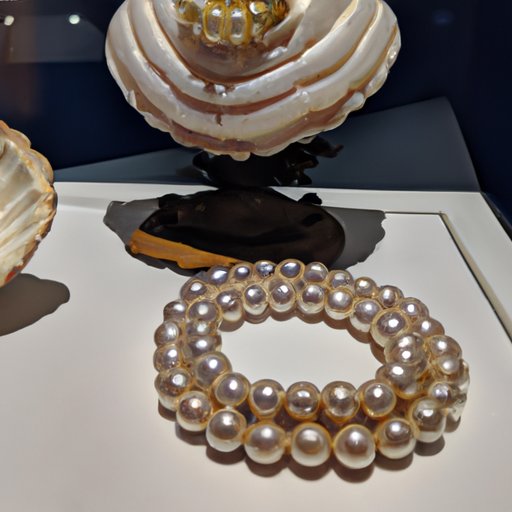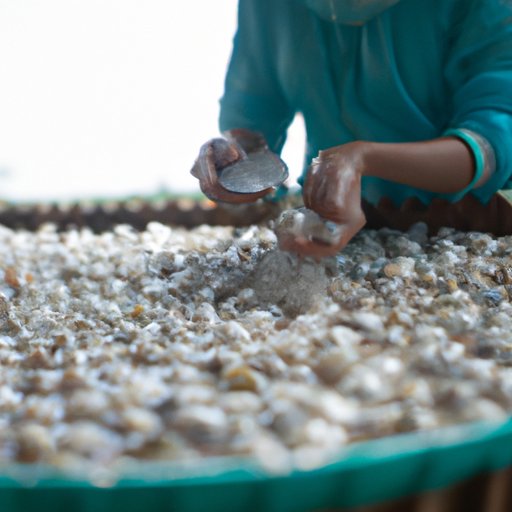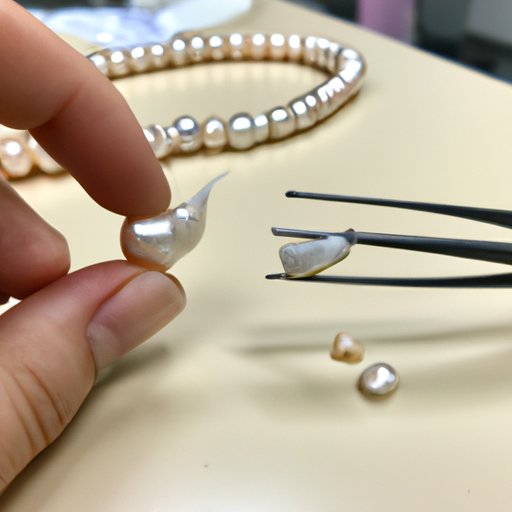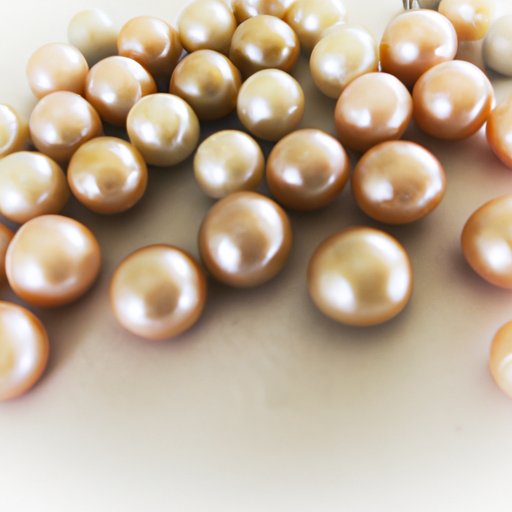Introduction
A cultured pearl is a pearl created through human intervention. It is the result of a carefully controlled process that involves the introduction of a tiny irritant into the body of a mollusk. This irritant causes the mollusk to secrete nacre, which coats the irritant to form a pearl. Cultured pearls are widely available and have become a major source of income for many pearl farmers around the world.
The term “cultured pearl” is often used interchangeably with “natural pearl”, but there are some key differences between the two. Natural pearls form in the wild without any human intervention, while cultured pearls are created with the help of pearl farmers. In this article, we will explore the differences between these two types of pearls and look at the history, formation, properties, and benefits of wearing cultured pearls.

The History Behind Cultured Pearls and How They Became Popular
The history of cultured pearls can be traced back to Japan in the early 1900s. Kokichi Mikimoto was the first person to successfully culture a pearl, and he received a patent for his process in 1916. His invention revolutionized the pearl industry, making pearls more accessible and affordable. Since then, the popularity of cultured pearls has grown exponentially, and they are now one of the most sought-after gems in the world.
The popularity of cultured pearls can be attributed to several factors. For one, they are much less expensive than natural pearls. Additionally, cultured pearls are available in a variety of sizes, shapes, and colors, making them very versatile. Finally, the quality of cultured pearls has improved significantly over the years, making them indistinguishable from their natural counterparts.
A Guide to Differentiating Between Cultured Pearls and Natural Pearls
The easiest way to differentiate between cultured pearls and natural pearls is by their appearance. Natural pearls tend to be irregular in shape, while cultured pearls are typically round or near-round in shape. Additionally, natural pearls tend to have a duller, less lustrous surface than cultured pearls.
In terms of formation, natural pearls are formed when a foreign object, such as a parasite or piece of sand, enters the mollusk’s shell and irritates it. The mollusk then secretes nacre to coat the irritant, forming a pearl. On the other hand, cultured pearls are formed when a small bead or piece of mantle tissue is inserted into the mollusk’s shell. The mollusk then secretes nacre to cover the bead or tissue, resulting in a pearl.

How Cultured Pearls are Grown and Harvested
The process of culturing pearls begins with the insertion of a small bead or piece of mantle tissue into the mollusk’s shell. The mollusk then secretes nacre to cover the bead or tissue, forming a pearl. Over time, additional layers of nacre are added, resulting in a larger pearl.
Pearl farmers must monitor the mollusks closely during the culturing process. Once the pearls reach a certain size, they must be harvested. This is done by carefully removing the mollusk from its shell and extracting the pearl. The pearls are then cleaned, sorted, and graded according to their size, shape, and color.

Exploring the Unique Properties and Qualities of Cultured Pearls
Cultured pearls come in a variety of colors, ranging from white to pink to black. They also vary in size, from tiny seed pearls to large baroque pearls. Each pearl is unique, and no two pearls are exactly alike.
Cultured pearls are known for their exceptional luster and shine. This is due to the thickness of the nacre coating, which reflects light and gives the pearl its unique glow. The luster of a pearl is an important factor in determining its value.
The Benefits of Wearing Cultured Pearls: An In-Depth Look
Cultured pearls are highly prized for their beauty and durability. They are resistant to scratches and other damage, making them a great choice for jewelry. Additionally, cultured pearls are extremely versatile and can be worn for any occasion, from casual to formal.
Cultured pearls have long been associated with wealth and status. They are often seen as symbols of elegance and sophistication, and have been used to adorn royalty for centuries. Today, cultured pearls remain a popular choice for bridal jewelry, as they are believed to bring luck and good fortune to the wearer.
Conclusion
Cultured pearls are a beautiful and timeless gemstone that have been used to create stunning jewelry for centuries. They are created through a careful and controlled process that involves the introduction of a small irritant into the body of a mollusk. Cultured pearls come in a variety of colors, sizes, and shapes, and are known for their exceptional luster and shine. Additionally, they are highly durable and versatile, making them a great choice for any occasion. In short, cultured pearls are a timeless treasure that can be enjoyed for generations to come.
(Note: Is this article not meeting your expectations? Do you have knowledge or insights to share? Unlock new opportunities and expand your reach by joining our authors team. Click Registration to join us and share your expertise with our readers.)
